Despite the need for online programs and distance education, students participating in online education tend to struggle more than those in face-to-face courses.
While 79% of online students view online programs as at least as good – if not better than – traditional courses, online courses typically have a 10-20% lower retention rate.
But it doesn’t have to be that way.
Here are three practical, proven ways of engaging online students in higher education. These work for fully online, hybrid, and blended learning courses.
1. Know your students by name
Odessa College, a community college in Texas with more than 8,000 students, wanted to improve their online course success rates.
“I know it’s common for online students to not succeed at the same levels as face-to-face students,” said Robert Rivas, Executive Director of Innovation and Research. “Knowing that’s true for us, we had to do something.”

Based on the success of their campus-wide Drop-Rate Improvement Program, they applied those tactics to engage students in online learning programs, too.
A key strategy?
Instructors need to build strong relationships with their students and get to know them personally.
Even when students are separated by distance, instructors can still get to know their unique personalities, with a little effort. “Get to know your students. Talk to them by name, meet with them all the time, tell them that you care, that they’re real people,” explained Robert.
In addition to frequently interacting with online students via messages, such as to ask if they have any questions about the upcoming quiz, some professors have their students introduce themselves by sharing a few hobbies and interests, so their online classmates can get to know them, too.
At Odessa, building strong relationships worked. “What was most surprising is our [online] students started succeeding at higher rates.”
2. Create videos for your online class
Instructor “Welcome Video”
Required in all fully-online courses, this is the first video instructors record and share to engage students in online learning.
Ideally, two-to-five minutes long, in this video instructors introduce themselves, share a little bit about themselves and the course, how to be successful in the course, and share their enthusiasm for the subject. It’s a great way to make a personal connection with their students and make them feel welcome in the course.
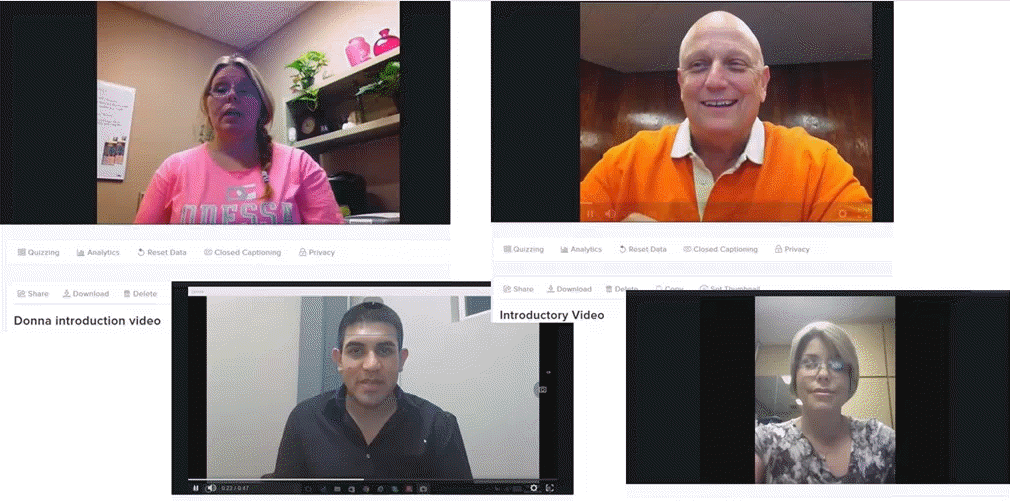
Shawn Shreves, VP of IT at Odessa College, explains how Welcome Videos engage students in online learning.
“These videos – especially for a web-based course – helps build the relationship between instructors and students. They get to see that their instructor is a real person. They’re not just a series of email messages or chat dialogue boxes. A lot of times instructors talk about their hobbies, they get personal. We know when we build that personal relationship with the student, they’re more likely to perform better in class.”
These videos – especially for a web-based course – helps build the relationship between instructors and students
Shawn Shreves, VP of IT at Odessa College
Course navigation video
This video walks students through all the ins-and-outs of how to operate in the course, including the technical how-tos of how to access important documents such as the syllabus, how to submit online assignments, how to login to the chat feature, and more.
Not only does this minimize confusion for online students, but it also helps the online course process feel more personal.
Hearing their instructor tell them the steps makes it more relatable and is another key way to build trust and relationship early on, instill confidence in using the online course platform, and gives additional encouragement to engage students in online learning.
Short video lessons
According to a study published in CBE Life Sciences Education, students prefer lessons that are shorter in length, preferably ten minutes or less. Shorter videos are easier to watch.
Even better? When videos introduce one concept at a time. Compared with hours-long lecture recordings, “chunking” up lecture content this way results in increased video views, plus better engagement and retention of the information.
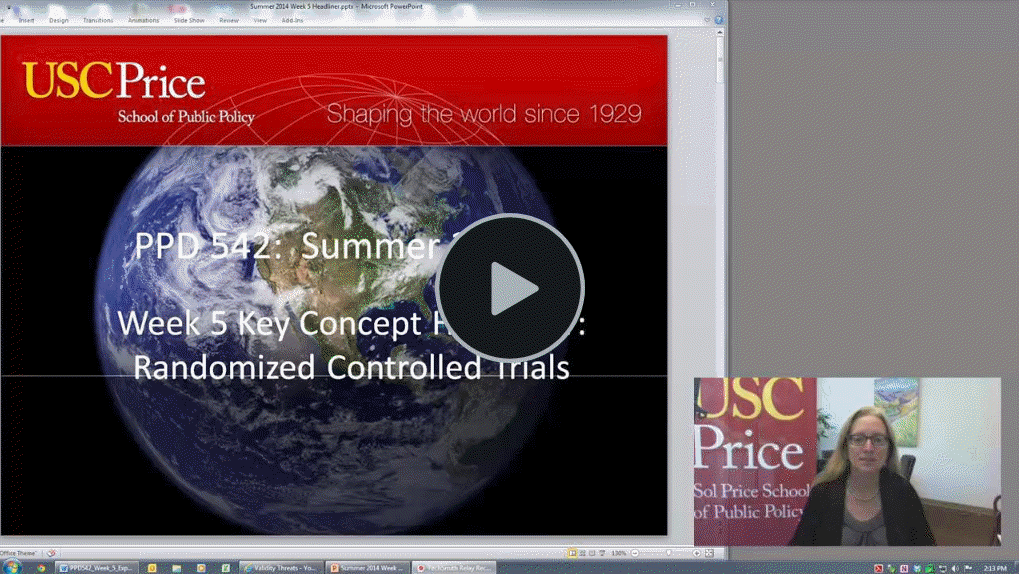
To do this, instructors can record their computer screens and narrate instruction, similar to how they teach when standing in front of a PowerPoint presentation and lecturing in a face-to-face class.
Jennifer Lee, Instructional Design and Technology Specialist, recommends this method as long as you keep the videos short. “The only difference is that students can watch videos at their convenience, as opposed to having to be in class to view them.”
Faculty can also capture lab lectures and demonstrations. You can include presentations, HD-video capture of lab models, and live-action experimentation in the lab.
“Giving faculty the ability to provide their lab lectures online really helped,“ explained Jennifer. “It allowed students to review the lab content prior to coming to the lab to complete the assessment work. It’s also beneficial for students who miss class/lab. If a student isn’t able to attend, they have the ability to review the content and get caught up before the next course.”
Students can even download entire videos and watch them when they don’t have an internet connection, such as when they’re on the road.
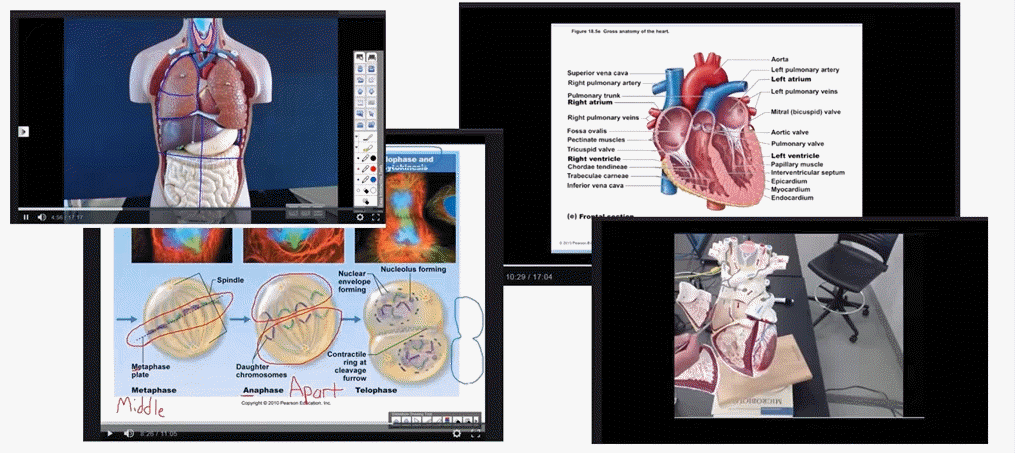
Add quizzes at specific points within videos to make them interactive and engage students in online learning. For example, you can add a quiz to check comprehension after each of the main points in your lecture. You could ask an essay question so students can show an example of what they’ve learned. The latest video platforms offer easy ways to add quizzing, and then automatically report quiz results to the Learning Management System (LMS) gradebook or Excel file. In addition to being a great way to gauge student learning, in-video quizzing decreases mind-wandering and helps students retain the information.
Record on-the-go to create in-the-moment teachable content that goes beyond the walls of your classroom. Instructors can record from anywhere outside the classroom. Students love it, and it helps build that personal connection between students and instructors. Jennifer describes how Dr. James Bolton uses mobile teaching to relay key concepts.
“Dr. Bolton took his kids to the beach one beautiful day. He decided he would make a quick video lesson for his students about how it’s important to protect skin from the sun, which was a relevant topic they were covering in class.”
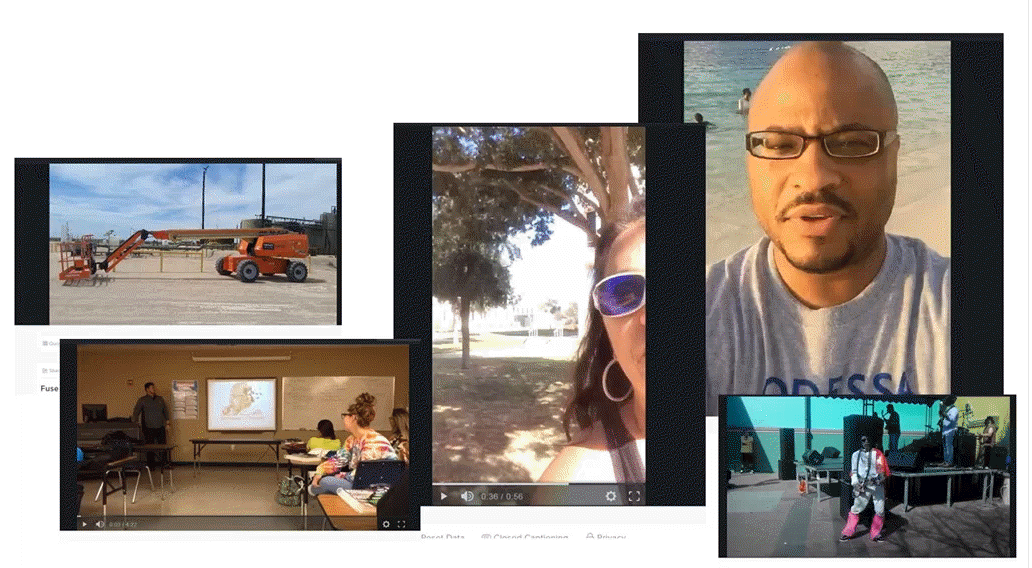
Assign student video projects to allow them to express themselves and branch out in ways they were not able to before. Especially in programs that require students to demonstrate specific skills, video can help them show their knowledge and progress, particularly in hands-on skills and performing arts. “Every student that I have ever talked to has really enjoyed video assignments,” said Jennifer.
3. Track student performance
Video analytics help see when students struggle, so you can step in before it’s too late. Specifically, key metrics to look at include:
- Which students are watching the videos?
- How much of each video they’ve watched?
- When they’re watching the videos (as soon as the videos are assigned, or do they wait until the day before the exam?)
- Quiz results – individually, and as a class
Biology professor Dr. Thomas Crawford uses analytics to compare how students are performing on assessments and how much they’ve watched of the video lessons.
When students are watching all the videos and doing well on assessments, Dr. Crawford praises them for that. If they’re not, he knows it’s crucial to reach out and interact with them one-on-one to help answer their questions.
“Having the ability to actually see the viewing analytics for the videos can greatly help instructors determine who are high and low performers in the class,” explains Jennifer. Shawn explains the accountability helps everyone. “Early on in the class, students discover they have been ‘caught’ trying to click through the video. They realize they’re going to have to do the work. The analytics helps everyone do a little bit better.”
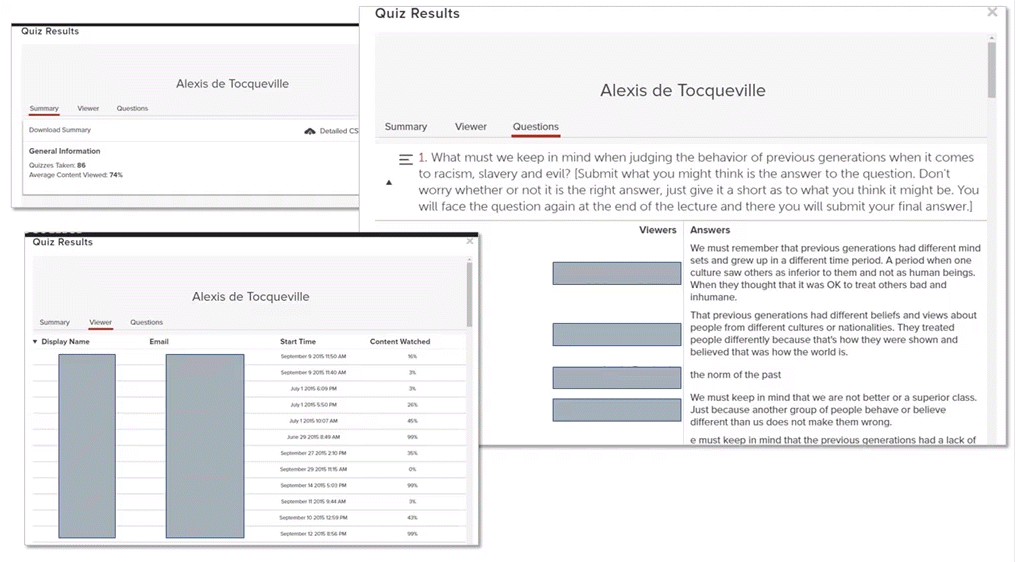
Seeing results – how to engage students in online courses
“We’ve found that constant student contact helps drive student success in courses,” said Jennifer. “If students know that the instructors know them by name, they know whether they’re logging in or not, they know if they’re reviewing material that they’re supposed to – all this creates a sense of accountability for students. They become more aware of the instructor presence. They’re encouraged to be more prompt on things like turning in their work, and more engaged when having discussions with their classmates.”
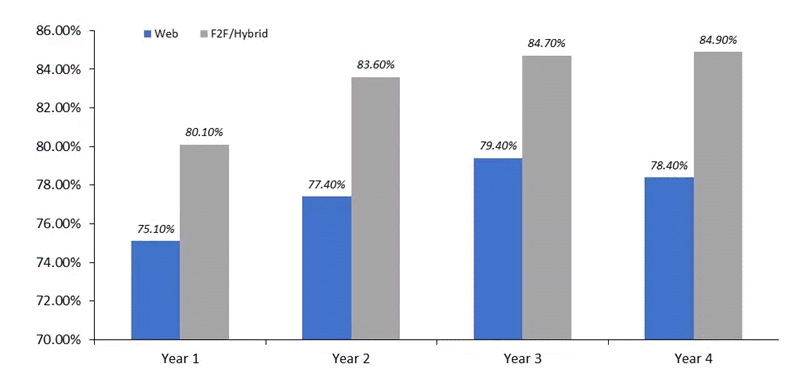
Since adopting these strategies along with a flexible video platform, media views have increased dramatically, course success rates increased, and drop/withdrawal rates decreased, earning them the Aspen Rising Star Award.
—
Create Effective Course Videos [Checklist]
This checklist gives you the exact videos to include in every course so you can easily engage students online.


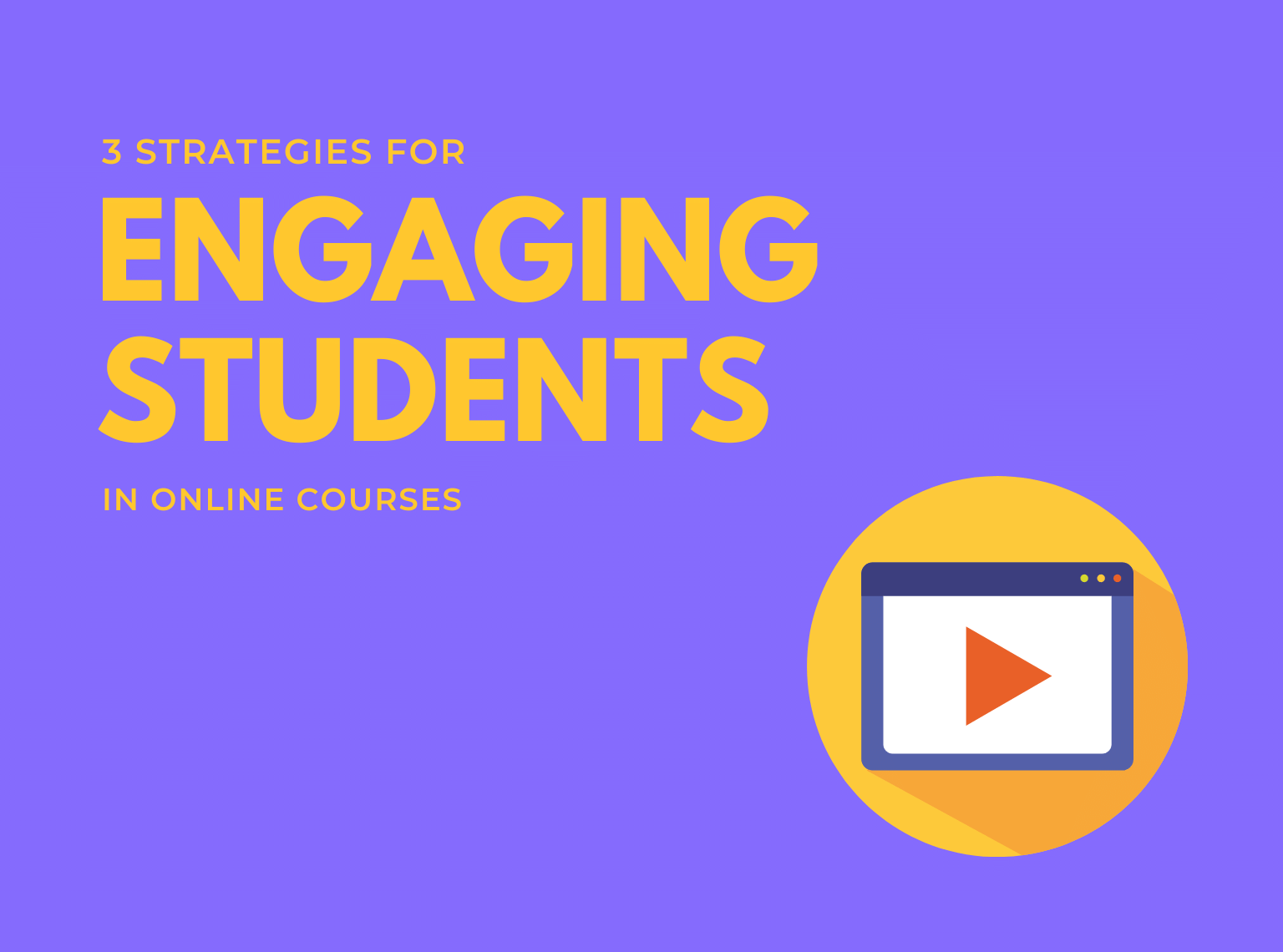
Share